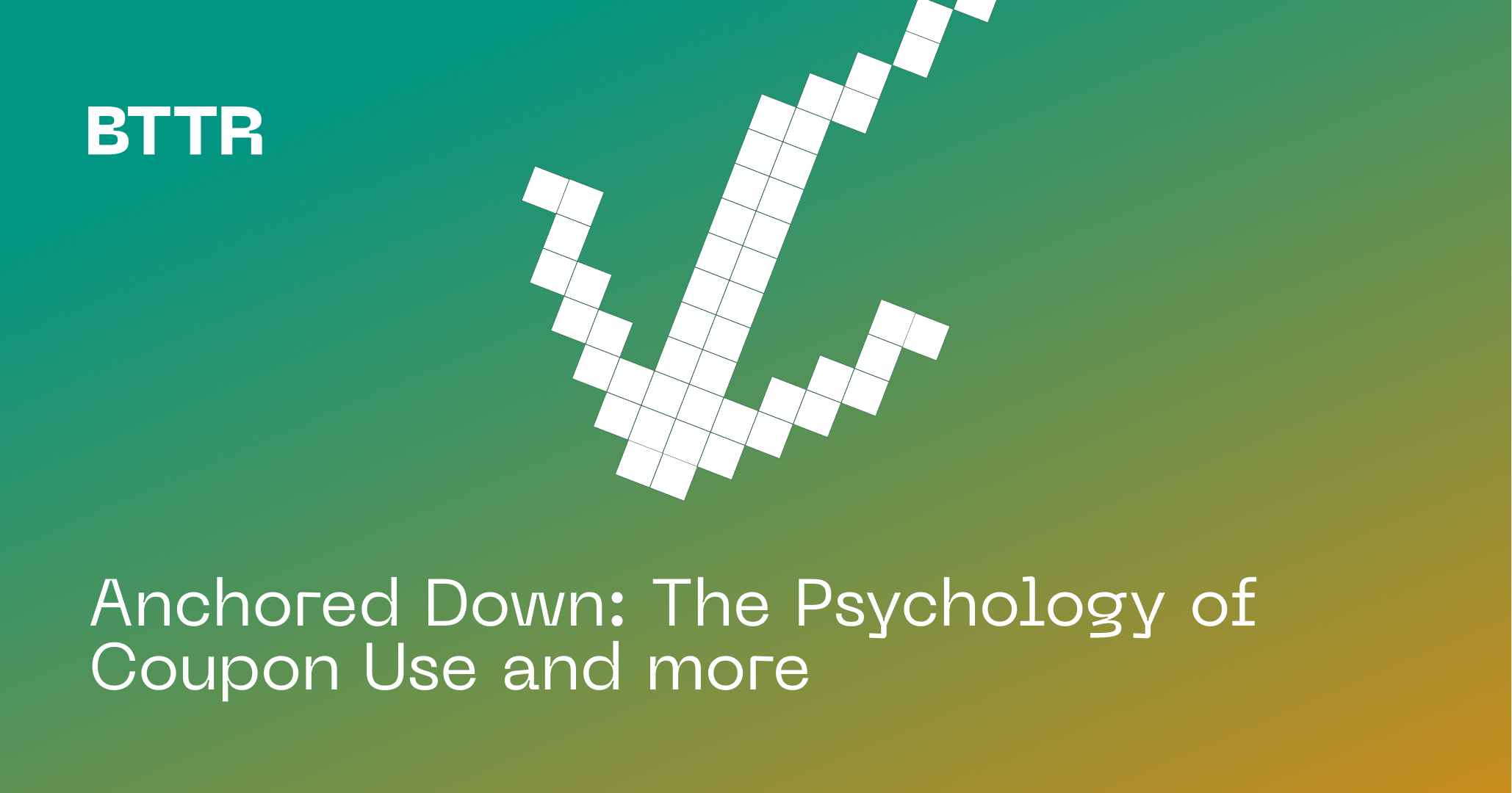Anchored Down — The Psychology of Coupon Use and more
 Advaith Krishna A
Advaith Krishna A
We've all experienced it - you walk into a store and see a sweater with a $100 price tag. If it goes on sale later for $60, that original $100 anchor price makes the $60 seem like a great bargain. This is the anchoring effect in action. Our decisions are biased by that first anchor price, even if it's arbitrary.
The anchoring effect refers to our tendency to rely too heavily on the first piece of information presented when making decisions. This initial value serves as an "anchor" that biases future judgments. And once that anchor is set, we tend to adjust away from it inadequately. In negotiations, the first offer thrown out becomes an anchor that all subsequent offers revolve around. We fail to adjust enough away from that original suggested number.
The adjustment heuristic comes into play here. When presented with an anchor, we try to adjust our estimate up or down from that starting point. Studies show we tend to stay close to the anchor, even when it is arbitrary or unreasonable.
The Social Psychology of Coupon Use
Coupons leverage this anchoring bias. A $50 list price makes a $25 coupon seem like a great deal. The higher initial anchor price casts the lower sale price in a more favourable light. Customers feel like they are "winning" against the retailer by securing a lower price with the coupon.
A prime example of failure due to not understanding anchoring effects is Ron Johnson’s strategy at JCPenney. Johnson was the head of Apple's highly successful retail stores before becoming CEO of JCPenney in 2011.
During his tenure as CEO, JCPenney famously tried to move away from constant sales and coupons and instead offer everyday low pricing. Many of the initiatives that were successful at the Apple Stores, for instance, the "thought that people would show up in stores because they were fun places to hang out and that they would buy things listed at a full-but-fair price" did not work for the JCPenney brand and ended up alienating its customers who were used to heavy discounting. Sales tanked - because without those original high anchor prices, shoppers didn't feel like they were getting a genuine bargain. JCPenney failed to recognize how anchors, not just the final price, influence shopping decisions.
The psychology of coupons is more complex than it seems. When we find and use coupons, it releases dopamine in our brains, making us feel satisfied and accomplished. Coupons appeal to our desire to save money and our preference for getting things for free. For people who enjoy using coupons, the excitement of finding good deals becomes addictive.
Framing Effects
The framing effect refers to how the way choices are presented impacts decision-making. Options that are objectively equivalent can be made to seem more or less attractive, depending on framing. For example:
Groundnut Oil labelled "80% lean" sounds healthier than "20% fat", and
Auto safety features described as "85% chance of saving a life" are more compelling than "15% chance of death".
Framing works because people generally prefer to avoid risks when it comes to gaining something but are more willing to take risks when it involves avoiding losses. The way we frame a choice - whether it's presented as a potential gain or loss - affects how we perceive it. Even slight changes in wording can have a significant impact on our decisions.
Decision Making and AI
AI system responses can influence human decision-making by anchoring bias. When people rely too heavily on the first answer given by an AI tool, they may overlook other options and limit their thinking. However, taking more time to evaluate AI suggestions carefully can help people analyze the responses and avoid anchoring effects.
A study found that when people had more time to think about AI answers, they adjusted further away from the initial anchor, leading to better judgment compared to those under time pressure who anchored more strongly.
In general, design strategies like transparent, explainable AI can reduce unintentional anchoring biases. By understanding the logic behind AI responses, people can critically assess the reasoning and avoid simply accepting the first solution. It is important to prioritize avoiding anchoring effects when developing responsible and ethical AI systems.
That's it for today. Stay curious, stay open-minded, and keep exploring the intriguing world of the human mind. I'll be back soon!
Subscribe to my newsletter
Read articles from Advaith Krishna A directly inside your inbox. Subscribe to the newsletter, and don't miss out.
Written by

Advaith Krishna A
Advaith Krishna A
IITG grad working in tech-focused product roles.